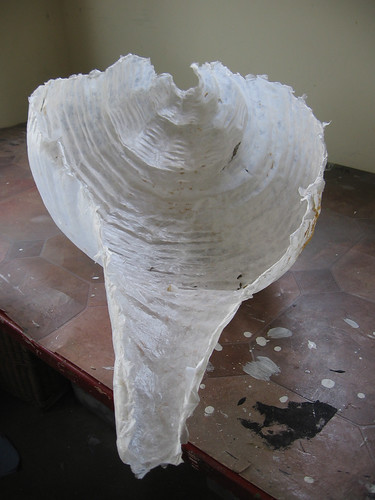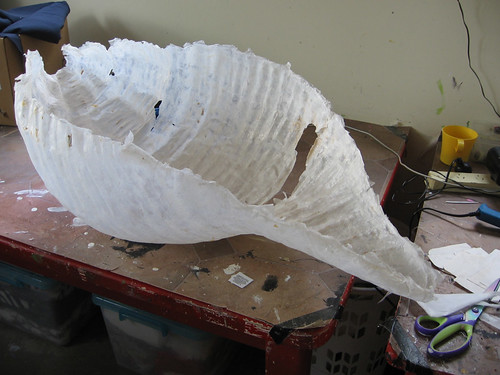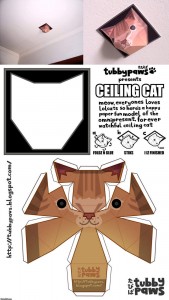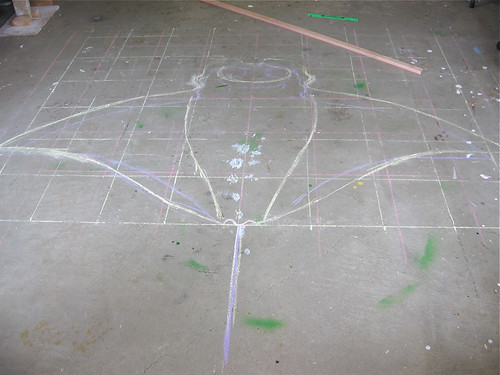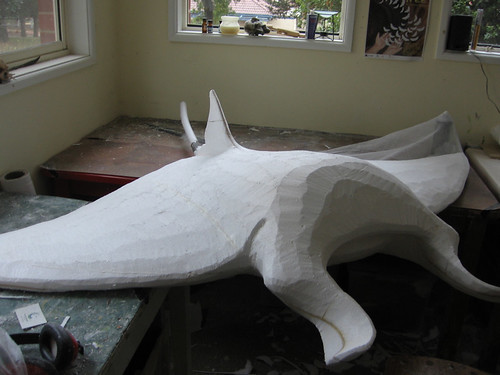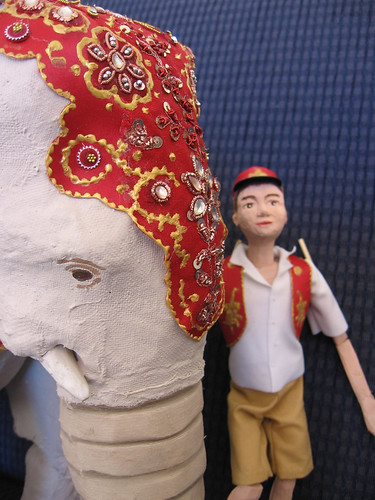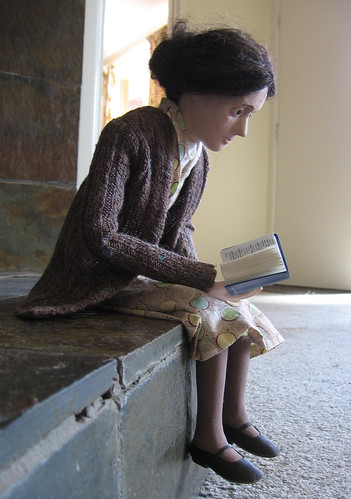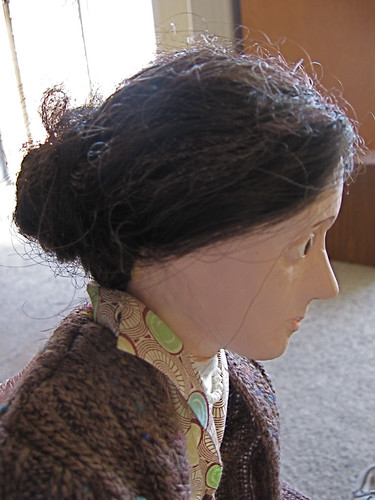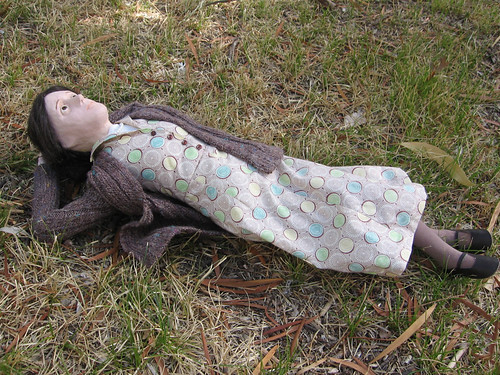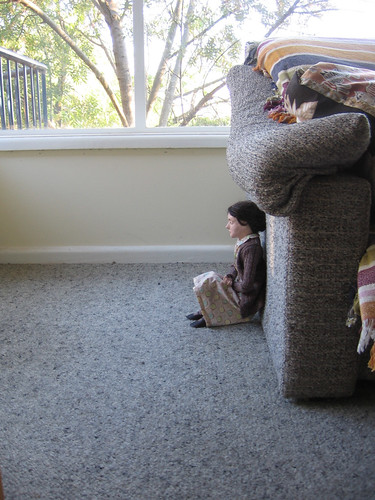Not finished yet.
make
How my shell is coming along
Saving traditional crafts and records of them
On FriendFeed today Amy today pointed to a British House of Commons debate about trying to save traditional crafts. I rather fear it is a lost cause. The upsurge in crafting and making in the last few years driven by the web is great in many respects, but I suspect probably can do little to help the traditional crafting skills of the sort referred to in the debate, as economies of scale are lined up against them.
But the article did remind me of some lovely images of traditional craftsmen by printmaker Stanley Anderson. Here are three:
Coppicing:
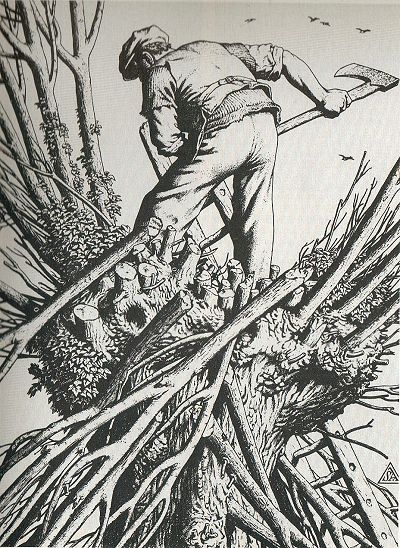
Chairmaking:

These are from Country Bazaar, a 1970’s book about country crafts. (I’m not sure about copyright here – please let me know if it is an issue). You can find a few more if you google, for instance The Violin Maker, but wouldn’t it be cool if it were possible to see the whole series?
Awesome: papercraft Ceiling Cat
Yes, I know now that this has been all over the web, but I only saw it today: Tubbypaws’s papercraft Ceiling Cat.
Giant Pinóquio puppet by Trigo Limpo ACERT
(photo credits and thanks: zetavares)
This fabulous giant Pinóquio puppet premiered last weekend at the Imaginarious Festival in Santa Maria da Feira in a street theatre production called The fantastic history of a child called Pinóquio by the theatre company Trigo Limpo ACERT. They come from Tondela, a small town in the centre of Portugal.
The choice of Pinocchio, the classic tale of a wooden boy who wants to become human, is particularly pleasing, because it reflects the puppeteers’ conceit of being able to bring inanimate things to life. And he looks beautifully articulated – I really like the way his leg and foot can turn and rest in his signature stance.
Zetavares has a great Flicker photoset of the 7 metre marionette, and has kindly let me post some of his photos here. He also has interesting sets of the making of the puppet, and the rehearsing the manipulation.
The character was sculpted by Carles of Madrid and Nico Nubiola of Taller de escultura De la Madrid & Nubiola, both of whom were involved with the production of the opening ceremony for the Barcelona Olympics. They have a cool video of how they made Pinóquio:
Teatro e Marionetas de Mandrágora were involved with the manipulation of the puppet. I first saw pictures of Pinoquio on their blog Espaço das Marionet@s, which I have been following for a while now.
Trigo Limpo ACERT have previously made some other great street theatre pieces, two of them large versions of traditional wooden push-along children’s toys. Memoriar na rotunda had a man pedalling a bicycle, (making photos here) and Golpe d’Asa, a bird whose wings flap as its wheel base rotates.
Desirée, my dear dead manta ray
This is the big dead manta ray prop that I made for the Street Theatre’s production of Jacques Brel is alive and well and living in Paris. Sadly Desirée – my name for her – was cut from the final production, but I loved making her. Manta rays are such awesome creatures!
Because she had a wingspan of over 2 metres, I decided chalk on the floor was a good way to start drawing up a pattern. I also bought myself a little plastic model of a manta to refer to, which turned out to be useful.
From this I traced a pattern onto butcher’s paper and from there onto sheets of polystyrene which were then built up and glued into a block.
I also decided to insert a strip of thin plywood into the underside right across the width of the wingspan, so that the wings would be protected from breaking, especially at the tips. I also did that with the fins that I added.
Then much shaping with a really sharp knife, a narrow power belt sander, and sandpaper. I decided to keep the surface a bit rough, which often makes it easier for an audience to read.
When I use polystyrene that will just have a painted finish I skin it with muslin first. Here you can just see some of the muslin draped over the spray adhesive can on the right.
I usually add a little bit of latex to the first coat of paint to help make everything stick to the styrene.
Then it’s on to colouring; for the final shading I used spray paint so that the colours merged softly. It was tricky to seat in the eyes (painted and glossed wooden door knobs) and get the shape of the upper eyelid right.
There are a few more in-between photos in my photoset at Flickr.
The Promise
Remember the little elephant and boy puppets I was working on last year? Here are some pictures of how they turned out. They were for the Flying Fruitfly Circus production The Promise, which premiered at the Sydney Festival about a month ago. The build for the show was quite big, and largely undertaken by Tim Denton and Annie Forbes in Melbourne, but I was asked to make these little ones and a life-size elephant trunk (more of the trunk soon in another post). The designer was Richard Jeziorny, whom I really like working with.
It’s part of the business that directors sometimes need to alter significantly or completely cut scenes and props, and in this case the elephant was altered or remade in Melbourne so that it could have more head movement than the original design. I was given the opportunity to do it, but couldn’t take it on at the time. It looks from this picture as if it was covered and the head possibly remade completely.
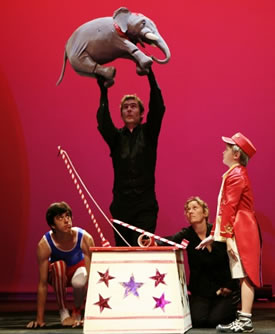
The production received great reviews such as this at the Australian Stage Online. I’d like to see it one day if they tour up this way.
Previously:
A little heffalump
Playing
Studio pics
Nearly done
Yes, Virginia, there is a puppet I’m afraid
I’m fond of Virginia Woolf, and her writing has influenced some of the ways I look at the world. I’m not sure if that explains why I wanted to make a puppet of her or not! I do find, though, that the making process itself allows me to understand and meditate in a unique way on what that person was like, and I end up feeling I know more about them than before. From that point of view the result doesn’t matter much. However, I would have liked to capture her beauty more, and her look is rather alarmingly intense. I’ve read she could be, but she wasn’t all the time, like my puppet.
I started making Virginia quite a while ago, and was trying out some experimental techniques and materials. I tried an air dry clay for modeling her face and hands. I wouldn’t chose it again because I don’t think it is very durable. I also wanted to see if I could build the arms and legs using tubes for the straight bones, round beads for the joints, and elastic running through them to keep them tensioned, then covering them with padding and fabric. There was too much play in them, and the limbs twisted. At this point Virginia got put aside. But now I’ve re-built her with good joints, and her feet are weighted nicely. She stands about 50cm (20 inches) tall.
I really like her outfit, and her shape and movement; she is satisfying to hold and play with (my kids had her doing the Time Warp the other night), and she is very much a small presence around the house.

